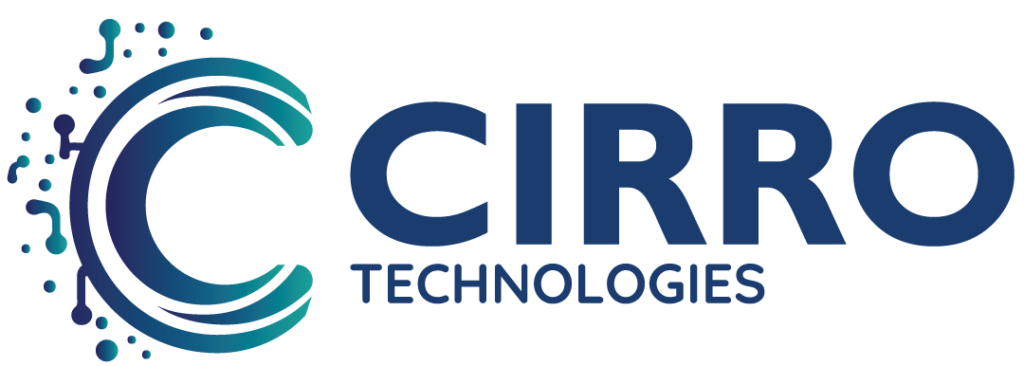Understanding fileless attacks and their impact on businesses
Fileless attacks have become a growing concern for businesses of all sizes in recent years. Unlike traditional malware that relies on executable files, fileless attacks leverage legitimate software and system tools to infiltrate networks and steal sensitive data. These stealthy and hard-to-detect attacks can cause significant damage to organizations, leading to financial losses, reputational harm, and compliance issues.
As businesses increasingly rely on digital technologies to operate, the need for robust cyber security measures has never been more crucial. Fileless attacks, in particular, pose a unique challenge as they often bypass traditional security solutions that focus on detecting and blocking malicious files. Understanding the nature of these attacks and the vulnerabilities they exploit is the first step in developing an effective defense strategy.
The importance of cyber security in today’s digital landscape
In today’s hyper-connected world, businesses face a constantly evolving landscape of cyber threats. From ransomware and data breaches to sophisticated phishing campaigns, the risks to organizational data and systems are ever-present. Cyber security has become a critical component of any successful business strategy, as the consequences of a successful attack can be devastating.
Maintaining the confidentiality, integrity, and availability of sensitive information is essential for protecting a company’s reputation, customer trust, and financial well-being. Cybercriminals are becoming increasingly sophisticated in their tactics, and businesses must stay vigilant and proactive in their approach to security.
Common vulnerabilities exploited in fileless attacks
Fileless attacks often target vulnerabilities in legitimate software and system tools, leveraging these to gain unauthorized access to networks and data. Some of the most common vulnerabilities exploited in fileless attacks include:
- Unpatched software: Outdated or unpatched applications and operating systems can provide an entry point for cybercriminals to exploit known vulnerabilities.
- Weak user credentials: Poorly managed or insecure user accounts, such as those with weak passwords or lacking multi-factor authentication, can be targeted by attackers.
- Abuse of administrative tools: Cybercriminals may hijack system administration tools, like PowerShell or Windows Management Instrumentation (WMI), to execute malicious code.
- Exploiting trusted processes: Attackers may leverage legitimate, trusted processes to inject and execute malicious code, evading detection by security solutions.
- Exploiting script-based vulnerabilities: Vulnerabilities in scripting languages, such as JavaScript or VBScript, can be used to launch fileless attacks.
Understanding these common vulnerabilities is crucial in developing a comprehensive cyber security strategy to protect against fileless attacks.
Cyber security solutions to protect against fileless attacks
Protecting against fileless attacks requires a multi-layered approach that combines various cyber security solutions and best practices. Some of the key solutions include:
- Advanced Endpoint Protection (AEP): AEP solutions use behavioral analysis, machine learning, and other advanced techniques to detect and prevent fileless attacks by identifying suspicious activities, even in the absence of malicious files.
- Endpoint Detection and Response (EDR): EDR tools monitor and analyze endpoint activity in real-time, allowing for the detection, investigation, and remediation of fileless threats.
- Privileged Access Management (PAM): PAM solutions help organizations control and monitor the use of privileged accounts, which are often targeted by fileless attacks.
- Network Monitoring and Analysis: Comprehensive network monitoring and analysis tools can help detect and mitigate fileless attacks by identifying anomalous network traffic and suspicious behavior.
- Security Information and Event Management (SIEM): SIEM platforms collect, analyze, and correlate security-related data from various sources, enabling the detection and response to fileless attacks.
Implementing a combination of these cyber security solutions can significantly enhance an organization’s ability to defend against fileless attacks and other advanced threats.
Implementing a multi-layered approach to cyber security
Effective cyber security requires a multi-layered approach that addresses various aspects of an organization’s digital infrastructure. This approach should include the following key components:
- Endpoint Protection: Implementing advanced endpoint protection solutions to detect and prevent fileless attacks, as well as traditional malware.
- Network Security: Deploying robust network security measures, such as firewalls, intrusion detection and prevention systems, and secure VPNs, to monitor and control network traffic.
- Identity and Access Management: Implementing strong user authentication, access controls, and privileged account management to mitigate the risks of compromised credentials.
- Vulnerability Management: Regularly scanning for and patching vulnerabilities in software and systems to minimize the attack surface.
- Incident Response and Recovery: Developing and regularly testing incident response and business continuity plans to ensure the organization can effectively respond to and recover from a cyber incident.
By implementing a comprehensive, multi-layered approach to cyber security, organizations can significantly enhance their resilience against fileless attacks and other emerging threats.
Best practices for securing your business against fileless attacks
To effectively secure your business against fileless attacks, consider the following best practices:
- Keep software and systems up-to-date: Ensure that all software, operating systems, and applications are regularly updated with the latest security patches to address known vulnerabilities.
- Implement strong access controls: Enforce robust password policies, enable multi-factor authentication, and carefully manage privileged user accounts to limit the risk of unauthorized access.
- Provide regular employee training: Educate your employees on the latest cyber threats, including fileless attacks, and train them to recognize and report suspicious activities.
- Monitor and analyze network activity: Deploy network monitoring and analysis tools to detect and respond to anomalous behavior that may indicate a fileless attack.
- Backup and protect critical data: Implement a comprehensive data backup and recovery strategy to ensure the availability and integrity of your organization’s critical information.
- Regularly review and update your cyber security strategy: Continuously assess your organization’s cyber security posture, identify areas for improvement, and adapt your security measures to address evolving threats.
By following these best practices, you can enhance your organization’s ability to prevent, detect, and respond to fileless attacks, ultimately safeguarding your business against the devastating consequences of these sophisticated cyber threats.
The role of employee training and awareness in cyber security
Employee training and awareness are crucial components of an effective cyber security strategy. Employees, regardless of their role within the organization, can be the first line of defense against cyber attacks, including fileless attacks.
Comprehensive training programs should educate employees on the following:
- Recognizing and reporting suspicious activities: Helping employees identify potential signs of a fileless attack, such as unusual system behavior or unexpected prompts for credentials.
- Implementing secure practices: Reinforcing best practices for password management, email security, and the safe use of company devices and networks.
- Incident response procedures: Ensuring employees understand their roles and responsibilities in the event of a cyber incident, and how to effectively respond and report such events.
- Emerging cyber threats: Keeping employees informed about the latest cyber threats, including fileless attacks, and how they can contribute to the organization’s overall security posture.
By fostering a culture of cyber security awareness and responsibility, organizations can empower their employees to be active participants in the defense against fileless attacks and other sophisticated cyber threats.
Choosing the right cyber security solutions for your business
Selecting the appropriate cyber security solutions for your business is a critical decision that requires careful consideration of your organization’s unique needs and risk profile. When evaluating cyber security solutions, consider the following factors:
- Threat landscape: Assess the specific cyber threats and vulnerabilities your organization faces, including the risk of fileless attacks, to ensure the selected solutions address your most pressing security concerns.
- Organizational size and complexity: Choose solutions that can scale to meet the needs of your business, whether you’re a small enterprise or a large, multinational corporation.
- Integration and compatibility: Prioritize solutions that seamlessly integrate with your existing IT infrastructure and can work cohesively as part of a multi-layered security approach.
- Ease of deployment and management: Select solutions that are user-friendly and can be efficiently deployed and maintained by your IT team.
- Ongoing support and updates: Ensure the vendor provides reliable and timely support, as well as regular updates to address emerging threats and vulnerabilities.
By carefully evaluating your options and selecting the right cyber security solutions, you can enhance your organization’s resilience against fileless attacks and other advanced threats, ultimately safeguarding your business and protecting your valuable assets.
The future of cyber security and emerging threats
As technology continues to evolve, the landscape of cyber threats is also constantly changing. Fileless attacks are just one example of the increasingly sophisticated tactics employed by cybercriminals, and organizations must remain vigilant and proactive in their approach to cyber security.
In the years to come, we can expect to see the emergence of even more advanced and elusive attack methods, such as:
- Artificial Intelligence (AI)-powered attacks: Cybercriminals may leverage AI and machine learning to automate and scale their attacks, making them harder to detect and mitigate.
- Internet of Things (IoT) vulnerabilities: The proliferation of connected devices in the IoT ecosystem can create new attack vectors that cybercriminals may exploit.
- Supply chain attacks: Adversaries may target the software and services provided by third-party vendors to gain access to their customers’ networks and data.
- Quantum computing-enabled threats: The advent of quantum computing could potentially render some of today’s encryption methods obsolete, requiring the development of new security protocols.
To stay ahead of these emerging threats, organizations must continuously invest in their cyber security capabilities, embrace innovative technologies, and foster a culture of vigilance and resilience within their workforce. By doing so, they can protect their businesses, safeguard their customers’ trust, and ensure their long-term success in the ever-evolving digital landscape.
Conclusion: Taking proactive steps to safeguard your business against fileless attacks
Fileless attacks pose a significant threat to businesses of all sizes, and the impact of a successful attack can be devastating. As the digital landscape continues to evolve, the need for robust and comprehensive cyber security measures has never been more critical.
By understanding the nature of fileless attacks, implementing a multi-layered approach to cyber security, and following best practices for securing your business, you can take proactive steps to protect your organization against these sophisticated threats. Investing in the right cyber security solutions, providing regular employee training, and staying vigilant in the face of emerging threats are all essential components of a successful cyber security strategy.To learn more about how our cyber security solutions can help protect your business against fileless attacks and other advanced threats, [contact us today](https://example.com/contact). Our team of security experts is ready to work with you to develop a customized security strategy that meets the unique needs of your organization.
Remember, the battle against cyber threats is an ongoing one, and businesses must remain proactive and adaptable to stay ahead of the curve. By taking the necessary steps to secure your business, you can safeguard your valuable assets, maintain the trust of your customers, and ensure the long-term success of your organization.



